Growth marketing enables a startup to improve ROI exponentially by focusing on acquisition, activation, retention, revenue and referral. The concept is based on the pirate metrics AARRR, coined in 2007 by Dave McClure, an angel investor and founder of 500 Global.
Growth marketing for startup combines marketing, data analysis, and experimentation to deliver increased revenue through customer acquisition and retention. It helps you launch products or campaigns faster through quick testing and iteration, learning, and improving existing processes.
This blog contains the most proven growth marketing tactics that can drive your startup's growth. Let's dive in!
Startup growth marketing: 6 full-proof strategies
Innovative strategies focus on speed and cost-efficiency, allowing startups to achieve fast results on a modest budget.
1. Paid ads for startup growth
Startups can use paid ads to drive customer acquisition by targeting specific audiences. For instance, the Google Ads platform is effective for high-intent audiences searching for quick solutions.
With paid ads, startups can quickly get their products in front of the right audience. Paid ads are also effective for remarketing and retargeting, enabling startups to re-engage existing customers or previous site visitors. Paid ads are also measurable, which promotes testing and iteration—which are essential growth mindsets.
Example: Grammarly leveraged paid ads to grow its website visitors to 17.4 million monthly. They focused on the YouTube Ad channel with engaging video campaigns, such as Grammarly for professionals, Grammarly for students, and #HelpingYouConnect. They also integrated other growth marketing strategies, such as SEO and direct response marketing, to grow their DAU 30x.
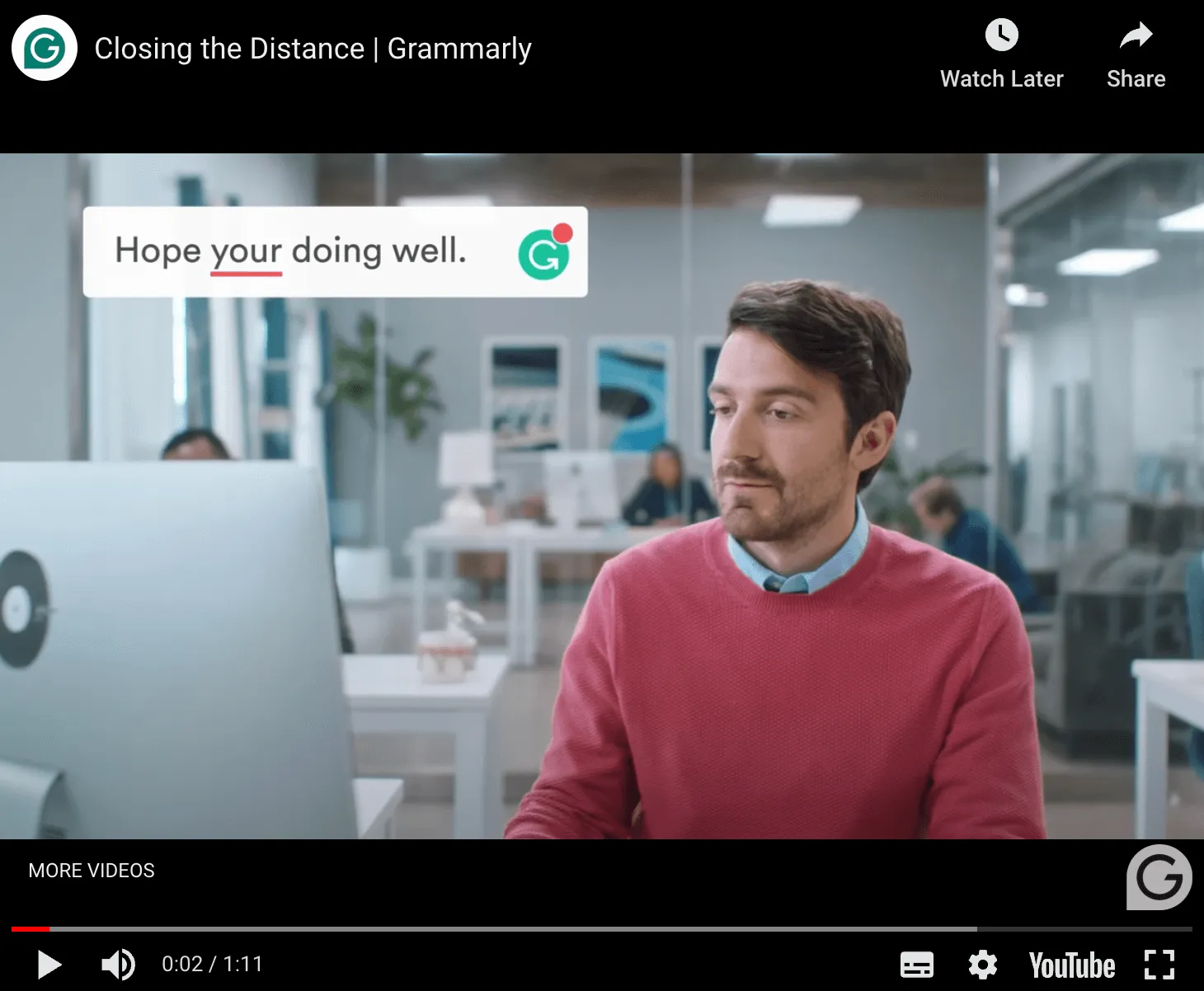
Grammarly's engaging YouTube ads have contributed significantly to a 30x increase in daily active users over six years.
2. Leveraging AI tools
AI tools support acquisition, retention, and revenue for startups. For instance, Meta's Advantage+ placements optimize for the best places to show your ad in real-time across Facebook and Instagram.
Using such AI-powered tools improves ad targeting, which is essential in the acquisition process. Startups can also leverage predictive analytics to study customer behavior patterns and use the data to upsell and cross-sell to previous customers. Upselling has a success rate of up to 70%, according to Forbes, and can deliver up to 30% ROI on average.
Startups can also use AI tools to analyze competitor ad data to gain extra insights and fine-tune their ad strategy. Kaya’s Competitor Ad Intelligence Tool automates the process, collects all the data in one place, and offers tailored suggestions to improve your ad targeting.
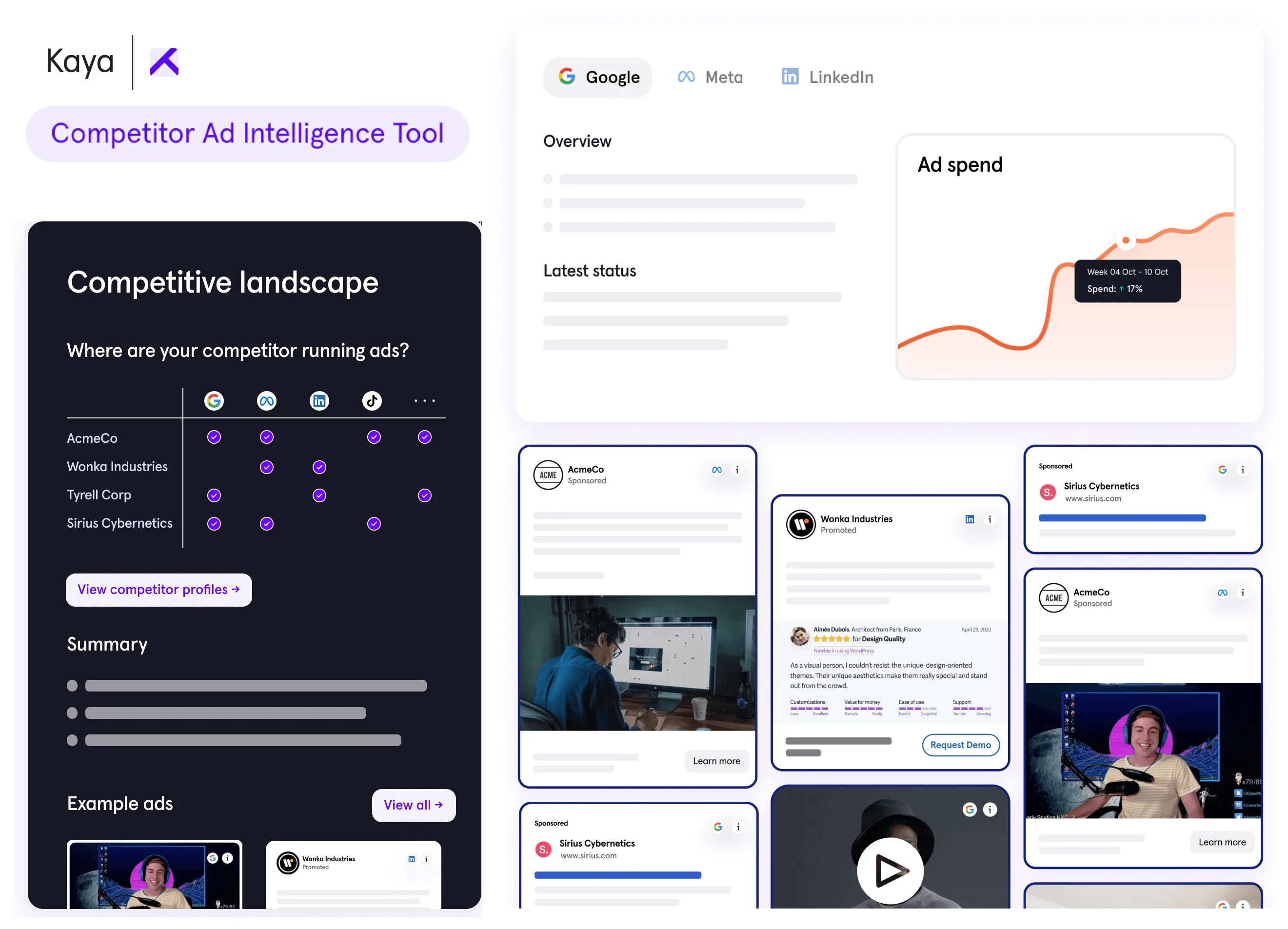
Kaya's Competitive Ad Intelligence Tool collects your competitors ads across platforms, and offers personalized recommendations to enhance your ad targeting.
3. Product-led growth
The product-led growth concept focuses on using the product to drive customer acquisition, activation, and retention. It offers a range of strategies for each part of the funnel:.
Acquisition: Product-led acquisition is about ensuring ease of access for the user. You can offer freemium packages on your SaaS product or allow new users to start with a free trial for 7 to 15 to 30 days. There are also other methods, such as:
| Acquisition method | Example |
| Self-onboarding | By using self-onboarding, startups can help users get value quickly. Slack is an example. Users can sign up, create a workspace, and invite team members, all within minutes. Such ease of access leads to rapid adoption. |
| User experience | By designing product features to be easy to use, startups can encourage faster user adoption and referral. |
| Content marketing | Aside from organic traffic and awareness, content marketing helps users to understand the product better. Think of how Notion uses third-party integrations, templates, and user-generated content (UGC) to help users make the most of its product. |
Activation: The goal of product-led growth at this stage is to reduce time-to-value (TTV). If users can see value quickly, it increases the chances of continued usage. In-product guidance and walk-throughs are simple strategies to achieve that. For example, once you acquire customers via your paid ads channels, you guide them as they navigate the product, revealing new features.
Retention: Brands can also use in-app messages, emails, new features, and regular updates to encourage users to continue to use a product. Continued user engagement reduces churn and leads to higher retention rates.
Example: Figma built its product-led growth strategy around collaboration. They integrated collaborative features that allow multiple users to work on a single file simultaneously. This led to a viral acquisition loop where committed users set up projects and invite new users to join and contribute.
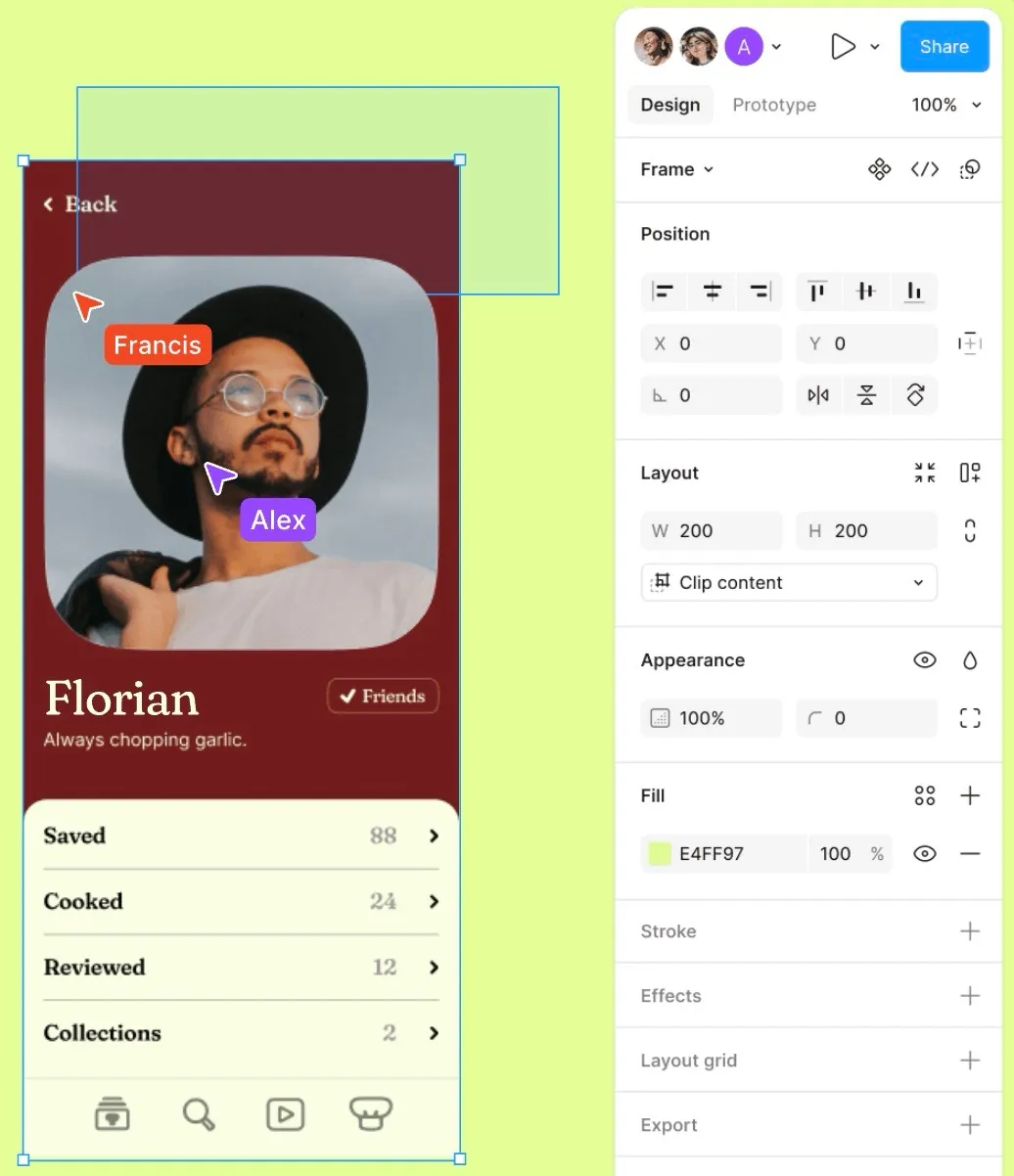
Figma allows multiple users to work on a single file simultaneously, creating a viral acquisition loop.
4. Gamification in marketing
Gamification adds a fun element to the user experience. It's about adding game-like elements to a user's interaction with your product. Gamification is mainly a retention strategy as it aims to keep the user engaged with a product.
Gamification strategies include using badges or rewards systems, leaderboards, etc. For example, you could award 1 point for every $5 spent and 50 points for each referral. You can also create personalized tasks that align with a user's interests.
- Gamification can increase customer lifetime value by 55%.
- Gamification can lead to a 36% increase in retention rates for learning material.
- Gamification can lead to a 40% increase in overall customer retention.
- Gamified apps have a 63% higher rate of retention than non-gamified apps.
Example: Duolingo implements gamification through the XP reward system and interactive user interface. It has used the strategy to grow its user base to over 300 million. Here are some statistics that show the impact of gamification in growth marketing for startups.
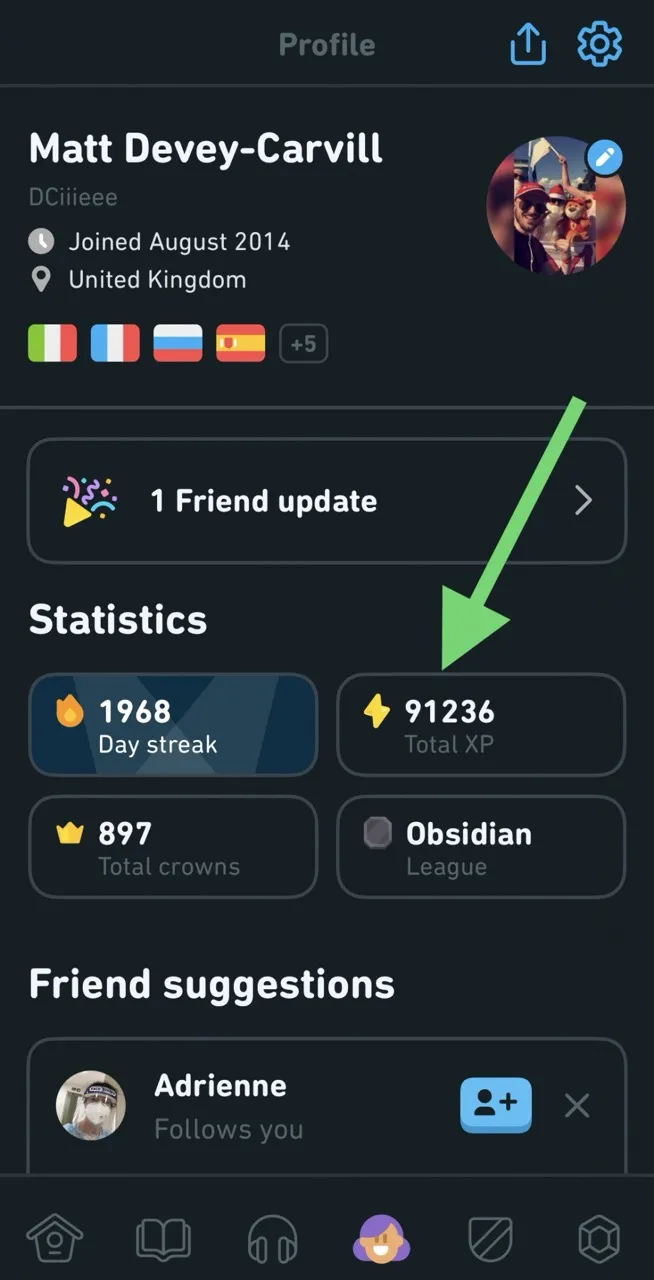
Duolingo's XP system incentivizes users to finish lessons, increasing engagement and retention.
5. Community-led growth strategies
A community-led growth strategy relies on the influence and inputs of a supportive community to drive growth. It is a go-to-market strategy where the relationships and conversations with users drive brand awareness.
By fostering a strong community, startups can increase customer retention and referral. Here are essential components to develop a strong community-led growth strategy.
- An active online community
- The right community-centric channels and platforms
- A strong CLG team
- A community flywheel
A good time to consider CLG strategy is when your product starts to gain momentum. Even if it’s in the beta phase, you can start building a community around your early adopters and beta testers, who are naturally driven to your product.
Example: Notion has leveraged a robust community to build a $10B business. They started by formalizing the ambassador program. The ambassadors created and engaged with users on their official subreddit (/r/Notion), as well as supported member-organized online groups. Other initiatives include in-person events, block-by-block conferences, and champions community.
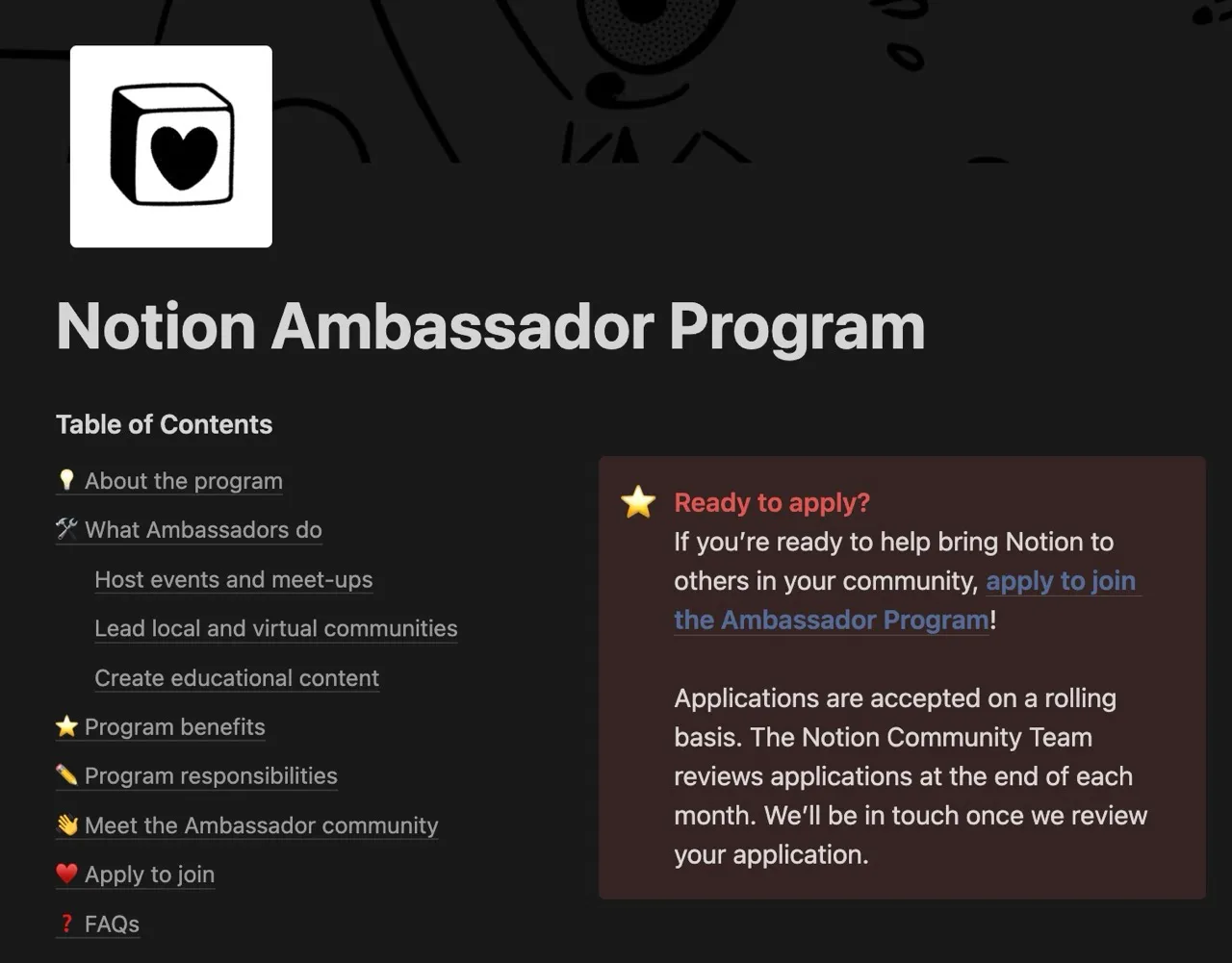
Notion's Ambassador Program turns satisfied customers into passionate advocates, driving organic growth through word-of-mouth.
6. Referral marketing strategies
Referral marketing strategies focus on using existing customers to drive growth. Referral marketing strategies focus on using existing customers to drive growth. By name, it aligns with the referral stage of the AARRR framework.
When a customer gets value from a brand, they become connected and grow into brand evangelists. At that point, they refer the brand to others.
A successful referral leads to new users—thus, creating a loop that feeds back into the top of the AARRR funnel. So, the referral strategy drives referral and acquisition. It is also versatile, as it can be integrated into paid ads, community forums, as part of customer onboarding, etc.
Example: Dropbox grew 3,900% in 15 months through its referral program. They integrated their referral program with onboarding. That enabled them to quickly move users through the acquisition and activation stages. By the end of the onboarding, there's a reward of 500 MB or 1 GB if a user invites their friend to use the product.
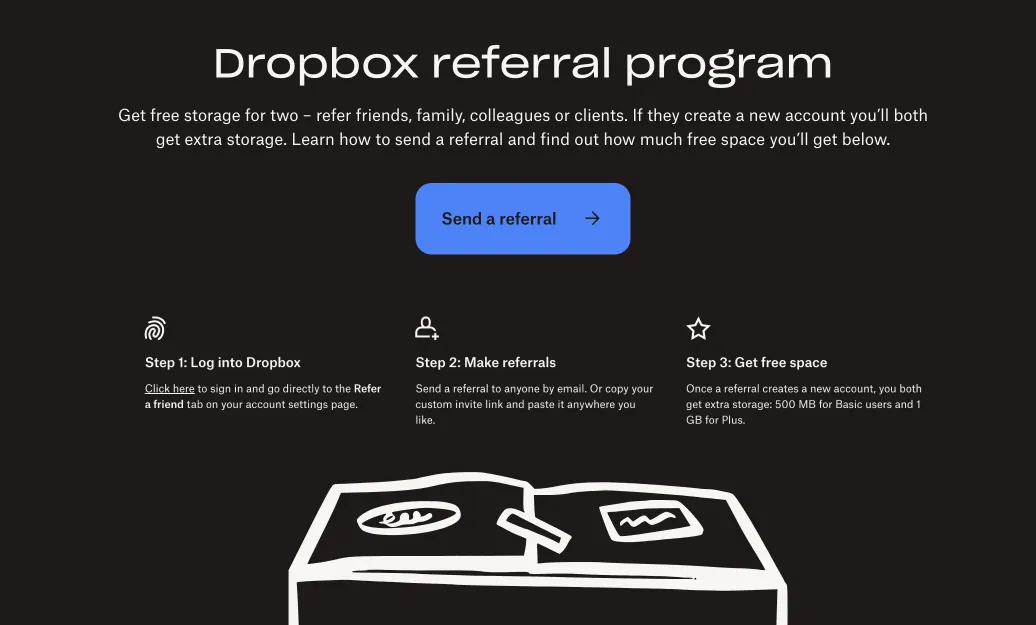
Dropbox integrated their referral program with onboarding, quickly moving users through the acquisition and activation stages.
Example of startup growth marketing: Canva
Canva creates incentives to keep users on their platform through the #CanvaDesignChallenge. Users can create designs based on a theme or brief of choice for the chance to win a prize pack and earn a feature on the Canva community.
There’s also a message drip campaign where they send out weekly tips to users, showing them shortcuts, how-tos, and new features. This strategy ensures they do not overwhelm the user. It also keeps users engaged as they always look forward to learning something new.

Canva runs campaigns and competitions to foster community engagement. This was the first community billboard design in San Francisco.
Common mistakes in startups growth marketing
While startup growth marketing delivers transformational results, founders must be careful to avoid these common mistakes.
- Overspending on ineffective channels: Startups may focus on ineffective channels as they don’t have a proper analytics setup. They miss out on key data or can’t monitor data closely, which leads to a leaky funnel. The best way to address this is to build a minimum viable marketing analytics stack.
- Targeting the wrong audience: Founders may also assume their product would be better suited to specific audiences. However, only a data-driven analysis would reveal the right audience to target.
To avoid these issues, startups can also A/B test versions of their ad strategy, such as audience type, targeting, landing page, ad placement, ad creative, and even budget.
Measuring and optimizing your startup growth marketing efforts
The idea of growth marketing emphasizes the need to be data-driven, iterative and experimental. To do that, you need to track performance data.
Key growth marketing metrics and tools to measure success
Tracking your KPIs allows you to understand the effect of your strategies. That way, you can double down or redirect resources accordingly. Here are the essential KPIs and relevant tools to track them.
| KPIs to track | Tools | |
|---|---|---|
| Acquisition |
|
|
| Activation |
|
|
| Retention |
|
|
| Revenue |
|
|
| Referral |
|
|
Using analytics tools to iterate on strategies
Considering the number of KPIs to track and the tools required, things can quickly become disorganized, leading to the loss of valuable data and time. Hence, it’s essential to understand and build a minimum viable analytics stack.
For instance, when running paid ads, you’d need to share data with the platform, which allows them to optimize your ads for high conversion. You can handle that with Google Tag Manager, UTM tags, or other event-tracking tools. Having a viable marketing analytics stack allows you to integrate and automate these processes. That way, you do not miss out on any data.
FAQ
How can AI tools enhance startup growth marketing efforts?
What are the best paid ads platforms for startups?
How do startups attract their customers?
Why do startups need growth marketing?
Final thoughts
Growth marketing differs from traditional marketing. It is agile, experimental, and data-driven, while traditional is more strategic and long-term-focused. Growth marketing also targets audiences most likely to convert, while traditional marketing aims at a broader audience.
While paid ads and AI offer excellent acquisition opportunities, startups can also leverage their product, community, and gamification to drive growth.
Kaya is at the forefront of growth marketing for startups, offering AI and paid ads solutions for fast customer acquisition and ROI improvements. Talk to us today to jumpstart your growth with paid ads management.

